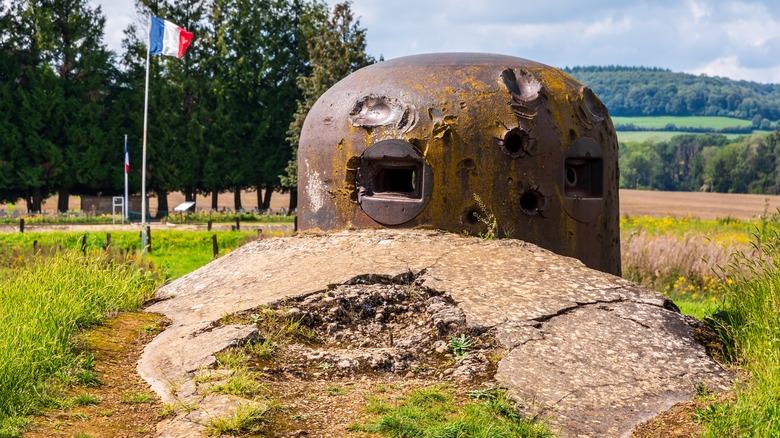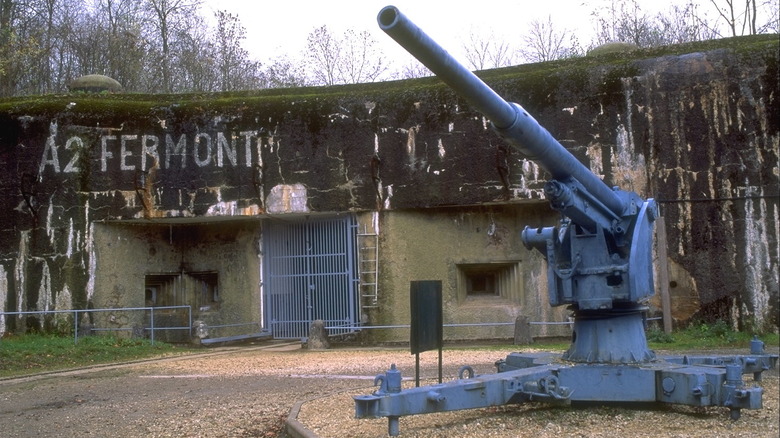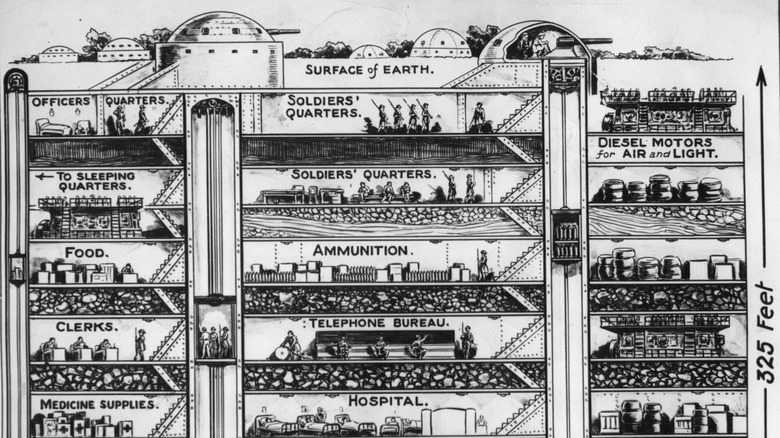
olrat/Shutterstock
World War I decimated generations of people in countless countries. France was especially ravaged, with over 8,000 square miles of its territory occupied by the Germans during the war and, more egregiously, suffering over 1.5 million deaths and over 3.4 million casualties. The cumulative effect shocked and scarred the French people, especially its military leaders. France had been on the receiving end of over thirty invasions by Germanic people over the centuries, but the horror of World War I was the breaking point. Enough was enough and something had to be done to stop the easy access into France from the east.
Advertisement
That something was the Ligne Maginot, now more commonly known as the Maginot Line. The defensive line of fortifications was the brainchild of Marshal Philippe Pétain, the hero of Verdun. The potential of renewed conflict with Germany was already taking root in the 1920s as it slowly began rearming. This prompted Pétain to develop a defensive strategy that relied on the building of extensive fortifications along the French-German border as a deterrent. Having gained the support of the Minister of War André Maginot, namesake for the defensive line, construction began in 1929 and would continue up until the start of World War II in 1939.
France’s Great Wall

Bernard Annebicque /Getty Images
The Maginot Line was to be France’s Great Wall, but with modern adaptions. The over 280 mile line ran along the border between France and its neighbors, Germany and Belgium, with the strongest fortifications running along the Franco-German front. Costing the French government over 3 billion Francs to construct, the Maginot Line was not one continuous wall, but rather a series of fortifications.
Advertisement
The fortifications themselves were to be a defense in design, and their intent was that the system of fortresses, bunkers, pillboxes, and shelters would deter an enemy due to its strength. At the least, the idea was that they could tie up an advancing army enough to allow the French military to mobilize and counter the threat before it could advance into France. The defensive network consisted of 142 bunkers or artillery forts, 352 casemates and 5,000 blockhouses. The mainline bunkers closest to the German frontier had 12-foot thick concrete front facing walls, with mine laden fields in front as well as vehicle and tank obstacles such as iron girders.
In the event that the enemy got behind the frontline, then they would be faced with bell turrets made up of 75 to 135mm retractable guns and multitudes of anti-tank, mortar and machine gun emplacements. All of these were linked by underground tunnels and a dedicated telephone system, which allowed for the safe movement of troops between fortifications and posts. The entire network of defenses by May 1940 would be manned by nearly two million French troops.
Advertisement
Too big to fail (not really)

Brandstaetter Images/Getty Images
The Maginot Line was the right defensive tool — for World War I. The advances in technology, mechanized warfare, and tactics such as the German Blitzkrieg brought mobile warfare to the battlefield. The French created a static defense, with strong and nearly impregnable fortresses along the Franco-German border which would have tied down huge swaths of the German Army in the last war. However, as evidenced in Poland in 1939, why fight concrete bunkers when you can just go around them altogether? Which for the most part, was what the German Army did when they invaded France.
Advertisement
The French development of the Maginot Line was faulted early on with its placement. It concentrated its heaviest defenses along its border with Germany, neglecting the vulnerable Franco-Belgium border which the Germans had used in prior conflicts to sweep into France. The German invasion of France, known as the Fal Gelb or Case Yellow in May 1940, saw the German army effectively ignore the static defenses of the Maginot Line, by sweeping into, through and capturing the Netherlands, Luxembourg and Belgium.
France itself would fall to the Germans on June 22, 1940. The French in building the Maginot Line had built a defensive system that was too big to fail and wouldn’t have — if they were still fighting the last war.
Advertisement